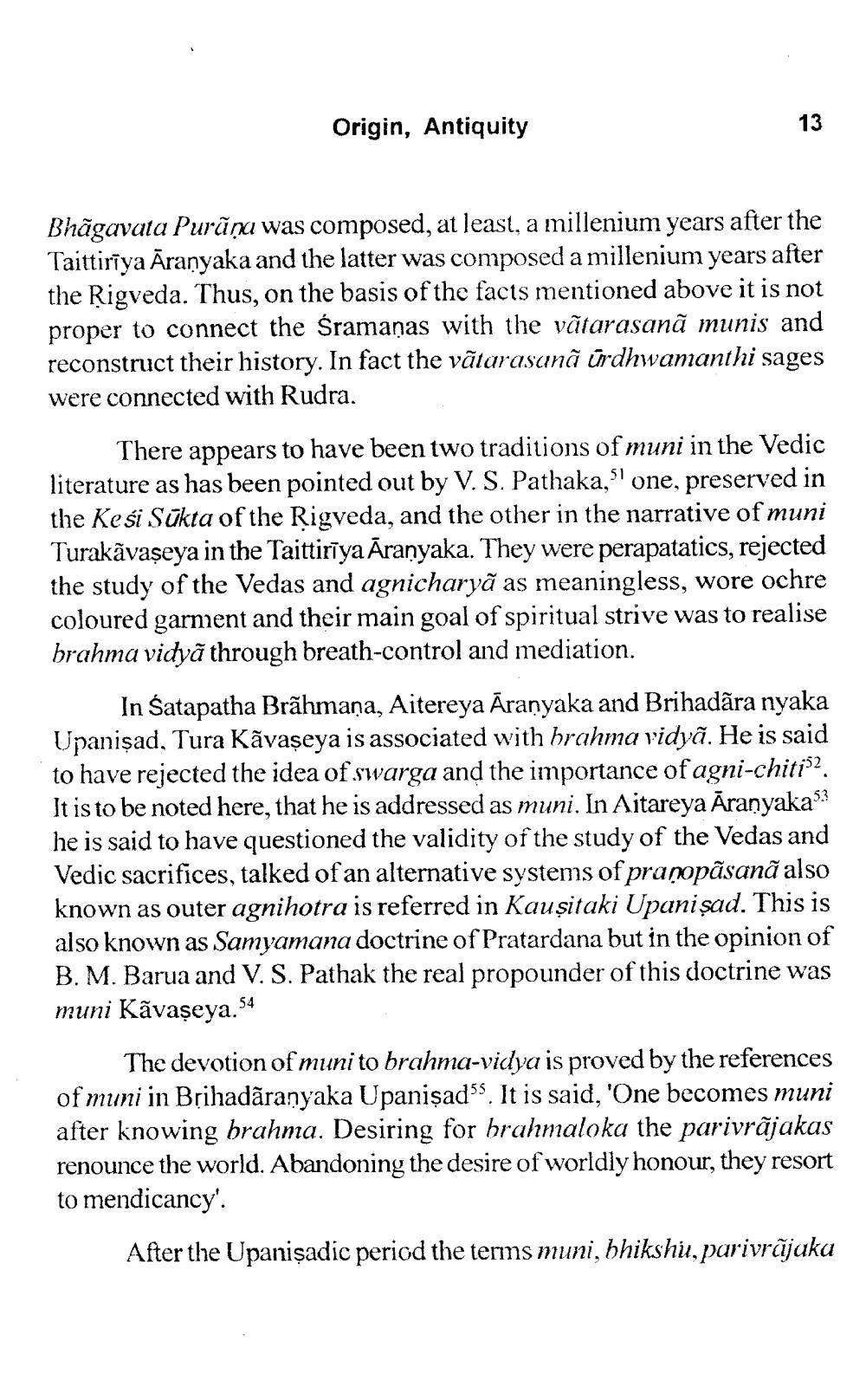________________
Origin, Antiquity
Bhāgavata Purūņa was composed, at least, a millenium years after the Taittiriya Āranyaka and the latter was composed a millenium years after the Rigveda. Thus, on the basis of the facts mentioned above it is not proper to connect the śramaņas with the vãtarasanã munis and reconstruct their history. In fact the vãtarasunā ūdhwamanthi sages were connected with Rudra.
There appears to have been two traditions of muni in the Vedic literature as has been pointed out by V. S. Pathaka, one, preserved in the Kesi Sūkta of the Rigveda, and the other in the narrative of muni Turakāvaseya in the Taittirīya Aranyaka. They were perapatatics, rejected the study of the Vedas and agnicharyã as meaningless, wore ochre coloured garment and their main goal of spiritual strive was to realise brahma vidyã through breath-control and mediation.
In Śatapatha Brāhmaṇa, Aitereya Āranyaka and Brihadāra nyaka Upanişad, Tura Kãvaseya is associated with brahma vidyã. He is said to have rejected the idea of swarga and the importance of agni-chiti2. It is to be noted here, that he is addressed as muni. In Aitareya Aranyaka? he is said to have questioned the validity of the study of the Vedas and Vedic sacrifices, talked of an alternative systems of prasopāsanã also known as outer agnihotra is referred in Kausitaki Upanişad. This is also known as Samyamana doctrine of Pratardana but in the opinion of B. M. Barua and V.S. Pathak the real propounder of this doctrine was muni Kãvaseya.54
The devotion of muni to brahma-vidya is proved by the references of muni in Brihadaranyaka Upanişads. It is said, 'One becomes muni after knowing brahma. Desiring for brahmaloka the parivrājakas renounce the world. Abandoning the desire of worldly honour, they resort to mendicancy'.
After the Upanişadic period the terms muni, bhikshi, parivrājaka




